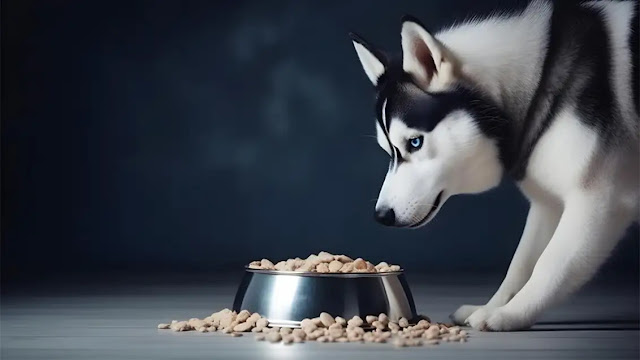how many cups of food should i feed my dog
Portion control for dogs
Feeding your dog the right amount of food is crucial for their overall health and well-being. Just like humans, dogs need a balanced diet to thrive. However, determining how much food to feed your furry friend can be a bit tricky. Every dog is unique, with different sizes, breeds, activity levels, and metabolism rates. In this article, we will discuss dog feeding recommendations and provide you with a guide on how many cups of food you should feed your dog.
Dog feeding recommendations
Feeding your dog an appropriate amount of food is important to prevent obesity and other health issues. If your dog consumes more calories than they burn, it can lead to weight gain, which can put a strain on their joints and increase the risk of diabetes, heart disease, and other conditions. On the other hand, feeding too little can result in malnutrition and inadequate energy levels.
When it comes to dog feeding recommendations, there are a few factors to consider:
- Size: The size of your dog plays a significant role in determining their portion size. Larger dogs generally require more food compared to smaller breeds.
- Age: Puppies and senior dogs have different nutritional needs than adult dogs. Puppies require more frequent meals and higher calorie intake to support their growth, while senior dogs may have lower calorie requirements.
- Activity level: Active dogs or those who participate in intense exercise or rigorous activities may need more calories to fuel their bodies.
- Breed: Certain breeds have specific dietary needs due to their genetic predispositions or body compositions. For example, some breeds are more prone to obesity or certain health conditions that require special diets.
Dog food portion
Most commercial dog foods provide feeding guidelines on the packaging based on your dog’s weight and activity level. These guidelines can serve as a starting point, but it’s important to remember that they are just general recommendations. Each dog is unique, and adjustments may need to be made to ensure your dog is getting the right amount of food.
The recommended portion size for dogs is usually measured in cups. However, cups can vary in size, so it’s essential to check the specific guidelines provided by the dog food manufacturer. As a general rule of thumb, a cup of dog food is approximately 8 ounces or 240 milliliters.
Keep in mind that the feeding guidelines on the packaging are typically based on the number of cups per day. This means that you should divide the total recommended amount into multiple meals throughout the day. Most adult dogs thrive on two meals per day, while puppies may require three or more meals.
Feeding guide for dogs
While following the feeding guidelines on the dog food packaging is a good starting point, it’s important to monitor your dog’s body condition and make adjustments as needed. Here’s a general feeding guide to help you determine the appropriate portion size for your dog:
Step 1: Determine your dog’s ideal weight
Consult with your veterinarian to determine your dog’s ideal weight. This can vary depending on breed, age, and other factors. Once you have the target weight in mind, you can use it to calculate the appropriate portion size.
Step 2: Calculate the daily calorie intake
As a general rule, dogs require around 25-30 calories per pound of body weight per day. However, this can vary based on their individual needs. Multiply your dog’s ideal weight by the appropriate calorie factor to calculate their daily calorie intake.
Step 3: Divide the daily calorie intake into meals
As mentioned earlier, most dogs do well with two meals per day. Once you know the daily calorie intake, you can divide it by the number of meals to determine how many calories your dog should consume in each meal.
Step 4: Convert calories to cups
Once you have the calorie requirement per meal, you can convert it to cups using the calorie content per cup provided on the dog food packaging. Most dog food brands mention the calorie content per cup or per kilogram on the packaging.
Step 5: Monitor your dog’s weight and condition
After calculating the recommended portion size, it’s important to monitor your dog’s weight and body condition. If your dog is gaining weight or becoming overweight, you may need to reduce the portion size. On the other hand, if your dog is losing weight or seems undernourished, you may need to increase the portion size.
Feeding tips for dogs
When it comes to feeding your dog, here are some additional tips to keep in mind:
- Stick to a schedule: Establish a regular feeding schedule and try to stick to it. Dogs thrive on routine and knowing when to expect their meals can help prevent anxiety or behavioral issues.
- Avoid free-feeding: Free-feeding, where food is available to your dog all day, can lead to overeating and obesity. It’s best to serve meals at set times and remove any uneaten food after a certain period.
- Gradual transitions: If you’re switching your dog’s food or introducing new foods, do it gradually over a week to avoid digestive upset.
- Use treats wisely: Treats should be given in moderation and should not exceed 10% of your dog’s daily calorie intake. Choose healthy, low-calorie treats to avoid weight gain.
- Consult your veterinarian: If you’re unsure about how much to feed your dog or have any concerns about their diet or weight, it’s always best to consult with your veterinarian. They can provide personalized recommendations based on your dog’s specific needs.
Remember, every dog is unique, and their nutritional needs can vary. It’s important to consider your dog’s individual factors and make adjustments as needed. By providing the right portion size and a balanced diet, you can ensure that your dog is happy, healthy, and thriving.













